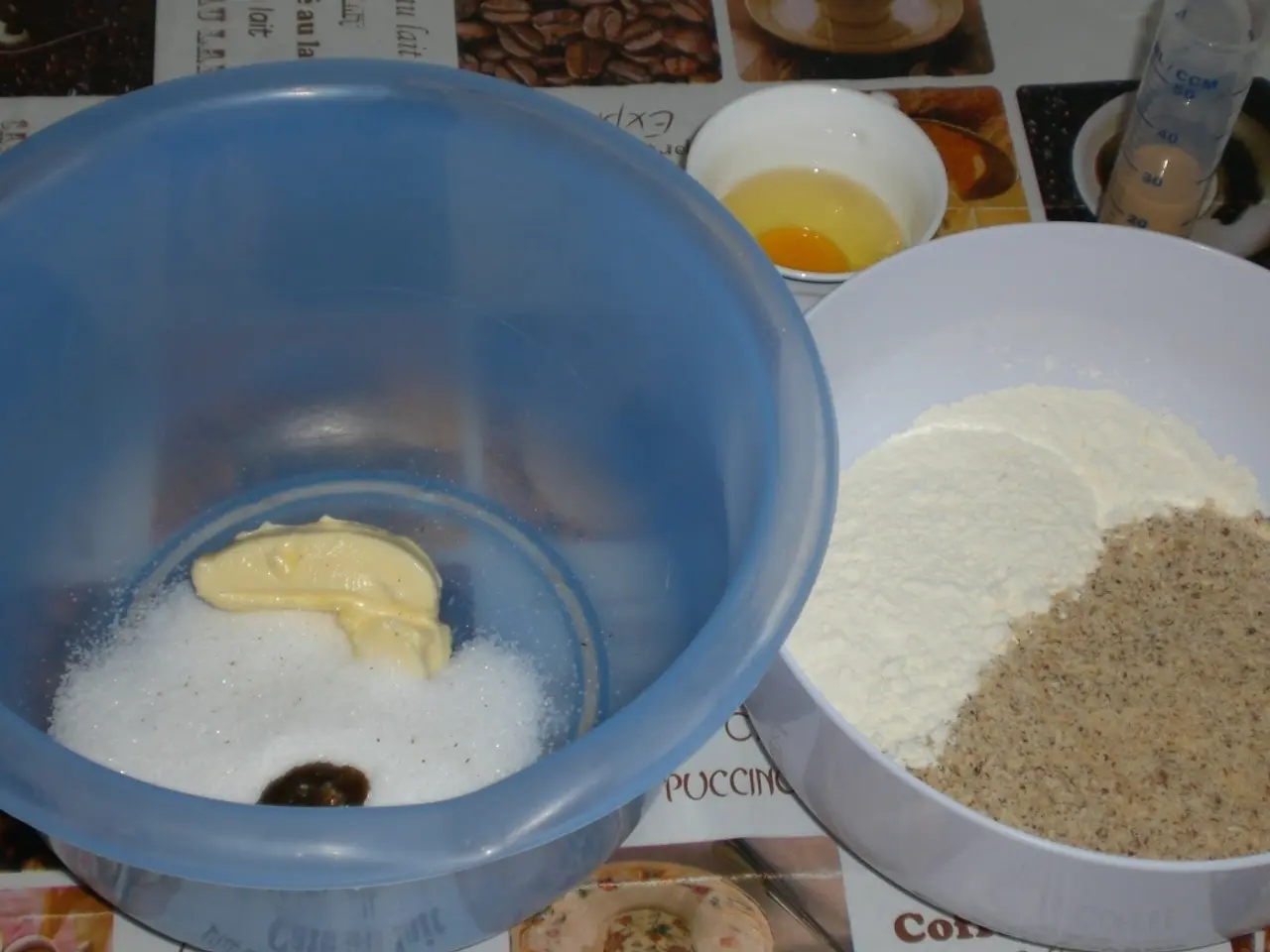Surgical extraction of gallbladder due to cholecystitis
In the realm of medical procedures, cholecystectomy stands out as a significant intervention. This surgical procedure, which removes the gallbladder, is primarily used to treat cholecystitis – an inflammation of the gallbladder, an organ that stores and concentrates bile.
Cholecystitis can be acute, occurring suddenly, or chronic, arising from repeated instances of acute cholecystitis. Symptoms include pain, nausea, and vomiting. The gallbladder's removal is the treatment for both acute and chronic cholecystitis.
There are two main types of cholecystectomy: laparoscopic and open cholecystectomies.
Laparoscopic cholecystectomy, a minimally invasive procedure, involves making four small incisions and inserting a camera- and light-mounted tube. This approach offers faster recovery, typically taking around 1 to 2 weeks, with most patients able to resume light activities within a few days and return to normal exercise routines slightly later. Pain is managed initially with prescription painkillers, then over-the-counter medications.
In contrast, open cholecystectomy involves making a large incision and using special clamps to hold the incision open. This method requires a longer recovery period, usually 4 to 6 weeks, with a hospital stay of 2 to 3 days. The larger wound size increases the risk of wound complications and requires more extensive pain management and respiratory support to prevent lung problems such as atelectasis or pneumonia.
Cholecystectomies have shown promising results in alleviating symptoms associated with cholecystitis. They may reduce acid reflux in between 24% and 92% of people, indigestion in between 41% and 91%, pain in between 66% and 100%, heartburn in between 43% and 72%, nausea in between 54% and 98%, and vomiting in between 57% and 100% of people.
However, these procedures are not without potential complications. Infections are possible complications of cholecystectomy, as are bile duct injuries or bile leakage, which can cause jaundice, persistent pain, fever, or abnormal stool/urine color. Other potential complications include respiratory complications, deep vein thrombosis (DVT), gastrointestinal symptoms, and bleeding or hematoma formation at the surgical site.
Post-cholecystectomy syndrome affects around 15% of people who receive cholecystectomies. Signs warranting immediate medical attention include severe persistent pain, high fever or chills, jaundice, persistent nausea/vomiting, and abnormal urine or stool color.
In conclusion, while cholecystectomy offers a viable solution for managing cholecystitis, it is crucial to remember that careful postoperative care is necessary to monitor for rare but serious issues. Doctors may perform several tests before surgery, including gallbladder ultrasound, abdominal CT scan, HIDA scan, and blood tests, to ensure the best possible outcomes.
The surgical procedure, cholecystectomy, is primarily used to treat cholecystitis, an inflammation of the gallbladder. Cholecystitis can be acute or chronic, and symptoms include pain, nausea, and vomiting.
Two main types of cholecystectomy exist: laparoscopic and open cholecystectomies. Laparoscopic cholecystectomy, a minimally invasive procedure, offers faster recovery with most patients resuming light activities within a few days and normal exercise routines slightly later.
In contrast, open cholecystectomy requires a longer recovery period due to a larger incision and increased risk of wound complications and respiratory support.
Cholecystectomies have shown promising results in alleviating symptoms associated with cholecystitis. However, they are not without potential complications such as infections, bile duct injuries, bile leakage, respiratory complications, DVT, gastrointestinal symptoms, bleeding, and hematoma formation.
Post-cholecystectomy syndrome affects around 15% of people who receive cholecystectomies and requires immediate medical attention.
In the realm of medical procedures, cholecystectomy is a significant intervention not only for digestive health but also for overall health and wellness, fitness and exercise, skin care, mental health, men's health, women's health, and aging. Good health is crucial in maintaining wellness at the workplace and managing chronic diseases like cancer, autoimmune disorders, and neurological disorders.
Science continues to evolve, providing newer therapies and treatments for various medical conditions, such as respiratory conditions, eye-health, hearing, sexual health, and skin-conditions. Nutrition plays a vital role in disease prevention and management, especially with weight management and cardiovascular health.
Parenting demands a balanced approach to mental health, ensuring emotional well-being for both parents and children. Medicare programs aim to provide affordable healthcare for seniors, ensuring access to medical care during the aging process.
CBD, a popular supplement, is being researched for its potential benefits in managing chronic diseases, neurological disorders, and various skin-conditions. However, it is crucial to consult healthcare providers before incorporating CBD into wellness routines.
In conclusion, managing medical conditions requires a comprehensive approach, considering various aspects like nutrition, fitness, mental health, and therapies. By prioritizing preventive care and early intervention, we can improve the quality of life and enhance overall health and well-being.




